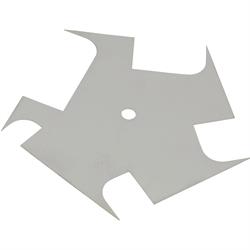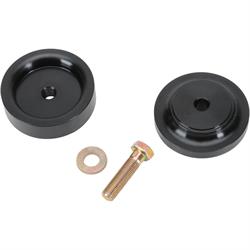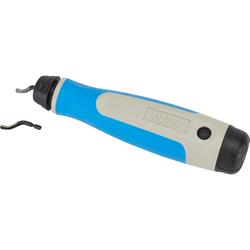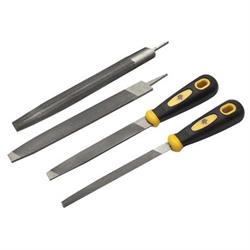10 Best Sheet Metal Tools for Racing
Building body panels for late models, modifieds, or stock cars can seem like a daunting task. However, with the right tools, some practice, and most importantly patience, you can build body panels in your garage at home that look as good as professional chassis builders'.
These handy little gadgets cut time out of the tedious measuring of every bend or hem you have to do around the perimeter of your piece. These sheet metal scribes are a must have item in my book. I use the large scribe so often that I keep one next to the sheet metal brake and another near my cutting station.
The mockup of sheet metal parts seems to be a constant on and off process at some points in the building stage. I like to mock them in place using clecos and cleco clamps. These little guys come in handy to temporarily mount a panel to add body lines, mark tire openings, etc.
These dimple dies are like icing on a cake. A round hole in a piece of sheet metal is ok but wow does it come to life with a bit of a flare. These dies are CNC machined steel and can handle steel or aluminum sheet metal up to 16 gauge (.060” thick). To use these, start by cutting a hole in the sheet metal to the size of the dimple die you are using, then hold the dimple over your hole and tighten the bolt. These will produce a 1/4” flare around your hole and enlarge the hole size just slightly.
For interior and deck panels, there seems to be a roll bar tube in your way everywhere you look. This handy tool makes quick work of those hard to cut, tight radius notches on deck panels or anywhere that tubing passes through your body panel. After using one of these interior tin notchers a few times you’ll wonder why you didn’t get one years ago.
A hand deburring tool and files are an absolute must. I don’t think I’ve built many body panels that didn’t get at least a little deburring. I find myself using a deburr tool and files constantly while building panels. Some attention to detail at this stage in the process will translate to a professional looking finished product in the end.
If you want to achieve a perfectly round wheel opening, I would highly suggest this wheel well compass from Wehrs Machine. It provides a perfectly round mark on your panels so that you can cut the wheel opening exactly to the size you desire. This tool is fastened to the axle of a floating hub rear end such as a Grand National or Wide 5 rear end. It works with both solid and gun drilled axles.
A sheet metal shrinker/stretcher is a great tool to have so that you can fabricate beautifully curved panels. I use it to create a curve in the front of modified and late model hoods as well as the A pillars and sail panels.
To strengthen up large panels a bead roller is where it’s at. You can create beads or steps into your panel in order to achieve that amount of rigidity needed. You can add beads to deck pieces as well as large interior panels such as the right side interior panel in a modified or late model. Some step beads strategically placed around the throttle pedal mounting area helps create a solid foundation to mount the pedal.
One thing a racer just can’t live without is an air rivet gun. I can’t even guess how many thousands of rivets I have pulled with mine. I’ve tried other brands before (mostly borrowing other peoples at the track) but honestly I’ve never had a better working one than our Speedway gun. I’ve borrowed several cheaper brands that sent me searching for my hand riveter.










